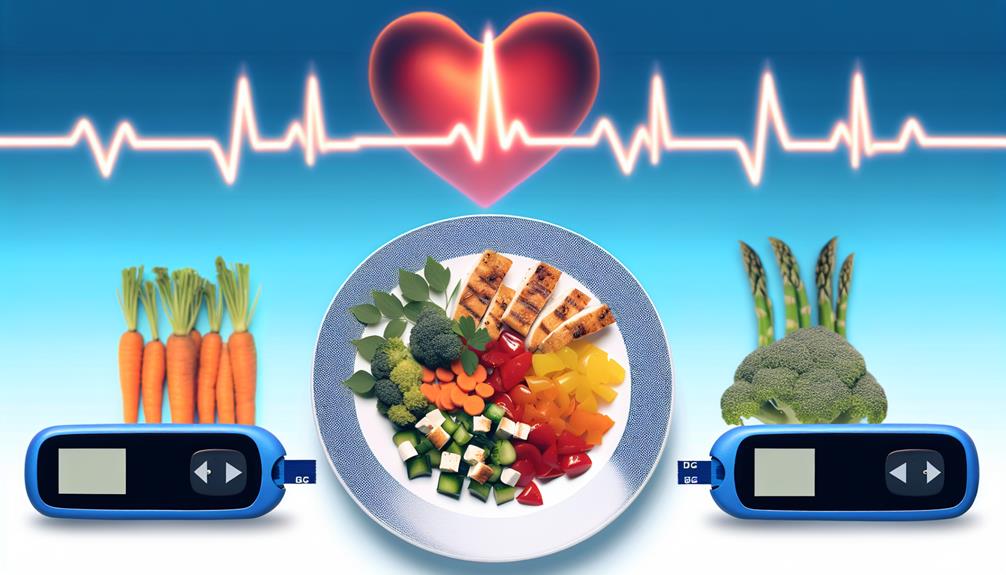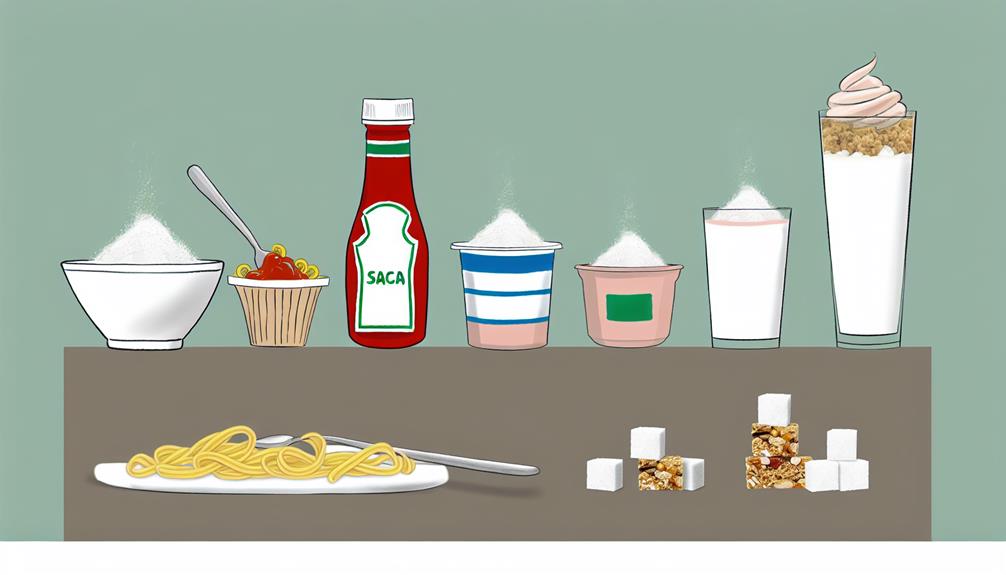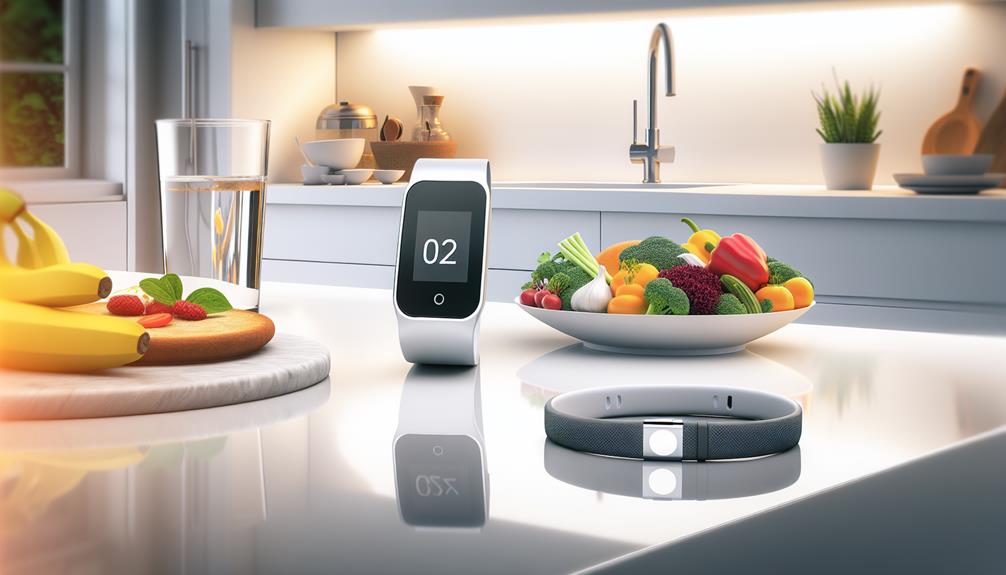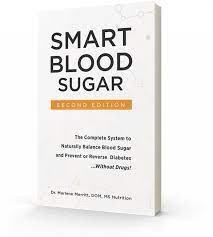Take control of your blood sugar with practical strategies tailored for everyday life. Start by eating balanced meals rich in protein, fiber, and healthy fats. Embrace regular exercise to boost insulin sensitivity and monitor blood glucose levels consistently. Be mindful of hidden sugars in processed foods and maintain a healthy weight. Use resources like carb count cheat sheets and structured meal plans to simplify management. Small, sustainable changes can greatly impact your health, helping you prevent complications and maintain stable blood sugar levels. Discover effective methods, tools, and tips for better management and improved well-being.
Key Takeaways
- Regular exercise enhances insulin sensitivity, effectively lowering blood sugar levels.
- Balanced meals with protein, fiber, and healthy fats stabilize blood sugar.
- Monitoring blood glucose levels reveals patterns for better management and adjustments.
- Avoid processed foods high in sugars to prevent blood sugar spikes.
- Structured meal plans with low glycemic index ingredients support blood sugar stability.
Importance of Blood Sugar Control

Maintaining ideal blood sugar levels is essential because it helps prevent serious complications like cardiovascular disease, nerve damage, and kidney dysfunction. If you’ve got diabetes or are at risk, keeping a close eye on your blood glucose levels is vital. Fasting blood glucose levels above 126 mg/dl indicate Type 2 diabetes, so regular monitoring can help catch any issues early.
By consistently tracking your blood sugar, you can identify patterns and triggers. This enables you to make personalized adjustments to your diet and medication, ensuring better management of your condition. For instance, a balanced diet rich in whole grains, vegetables, and lean proteins plays a significant role in blood sugar control. Not only does such a diet help stabilize blood glucose levels, but it also boosts your overall health.
Regular physical activity is another cornerstone of managing diabetes. Exercise doesn’t just lower your blood sugar levels; it also enhances insulin sensitivity. This means your body can use insulin more efficiently, making it easier to maintain ideal blood sugar levels. Think of physical activity as a natural way to help your body manage blood glucose without relying solely on medication.
Understanding the importance of blood sugar control can empower you to make informed lifestyle choices. By prioritizing a balanced diet and regular exercise, you’re not just managing your diabetes—you’re taking proactive steps to improve your overall health. So, keep an eye on those blood sugar levels and stay committed to a healthier lifestyle for better long-term outcomes.
Balanced Diet Tips
To keep your blood sugar levels steady, prioritize whole foods like vegetables, fruits, whole grains, and lean proteins in your diet. Whole foods are packed with essential nutrients and fiber, which help slow down the absorption of sugar into your bloodstream, preventing those dreaded spikes and crashes.
Balanced meals are key to maintaining ideal blood sugar levels. Aim for meals that include a source of protein, fiber, and healthy fats. For example, you could have a quinoa salad with grilled chicken, mixed greens, avocado, and a sprinkle of nuts. This combination not only keeps you full longer but also helps in regulating your blood sugar throughout the day.
Healthy fats, such as those found in avocados, nuts, and olive oil, play an important role in your diet. They help slow the absorption of carbohydrates, providing a more gradual release of sugar into your blood. This can help you avoid those sudden spikes in blood sugar that often follow meals high in refined carbs.
Limit processed foods as much as possible. These foods are often high in added sugars and refined carbohydrates, which can cause rapid increases in blood sugar and contribute to insulin resistance over time. Instead, opt for whole foods that are minimally processed and nutrient-dense.
Lastly, don’t forget the importance of hydration. Drinking plenty of water and herbal teas is vital for ideal metabolic function. Proper hydration helps your body manage blood sugar levels more effectively, reducing the risk of spikes and crashes.
Benefits of Regular Exercise

Engaging in regular exercise is one of the most effective ways to improve insulin sensitivity and lower blood sugar levels. When you incorporate physical activity into your routine, your body becomes more efficient at using insulin to transport glucose from your bloodstream into your cells. This improved insulin sensitivity means your blood sugar levels are more likely to stay within a healthy range, reducing the risk of developing Type 2 diabetes.
According to health guidelines, aiming for at least 150 minutes of moderate aerobic activity per week can greatly impact your blood sugar control. This could be as simple as brisk walking, cycling, or swimming. Additionally, resistance training exercises like weight lifting are beneficial. These exercises help build muscle mass, which increases your body’s capacity to store glucose and maintain stable blood sugar levels.
Moreover, regular physical activity is a key factor in weight management. Maintaining a healthy weight is vital because excess body weight can lead to insulin resistance, making it harder for your body to manage blood sugar levels. By keeping your weight in check through exercise, you’re taking a proactive step in preventing Type 2 diabetes and improving overall health.
Beyond the physical benefits, exercise also has a positive impact on your mental health. Physical activity triggers the release of endorphins, which can elevate your mood and make it easier to stick to other diabetes management strategies, including maintaining a balanced diet. So, incorporating regular exercise into your lifestyle is not just about managing blood sugar levels; it’s about enhancing your overall quality of life.
Monitoring Blood Glucose Levels
Regular exercise not only aids in weight management and insulin sensitivity but also emphasizes the importance of monitoring blood glucose levels to keep your health on track. Effective diabetes management hinges on your ability to consistently track your blood glucose levels. By doing so, you can identify patterns that help inform necessary dietary and lifestyle adjustments.
Monitoring your blood glucose levels is crucial. Fasting blood glucose should ideally be lower than 100 mg/dl for healthy individuals. Levels between 100 to 125 mg/dl indicate prediabetes, and anything 126 mg/dl or higher confirms diabetes mellitus. Keeping a close eye on these numbers allows you to take control and make proactive changes before complications arise.
Consistent tracking provides insight into how food intake, physical activity, and medication affect your glucose levels. This knowledge empowers you to make informed decisions, ultimately improving your diabetes management. You can prevent unwanted spikes or drops by understanding these trends and adjusting your habits accordingly.
Modern tools and apps can greatly streamline the monitoring process. They make data collection easier and allow you to share trends with your healthcare provider. This collaborative approach guarantees that your diabetes management strategy is as effective as possible. Additionally, many of these tools offer automated A1C percentage calculations based on your tracked readings. This feature provides a thorough view of your long-term blood sugar control, aiding in more proactive management.
Identifying Hidden Sugars

Have you ever wondered how much hidden sugar is lurking in your everyday foods? You might be surprised to learn that many processed foods, from sauces and dressings to snacks, contain hidden sugars that can wreak havoc on your blood sugar levels. These sugars often go by various names like high fructose corn syrup or cane sugar, making it vital to read ingredient labels carefully.
The average American consumes about 22 teaspoons of added sugars daily, far exceeding the American Heart Association’s recommended limit of 6 teaspoons for women and 9 teaspoons for men. Hidden sugars can be especially problematic because they can lead to unintended spikes in blood sugar, increasing your risk of diabetes-related complications. Foods marketed as ‘low-fat’ or ‘healthy’ often contain high levels of hidden sugars to enhance flavor. This is why it’s important to scrutinize ingredient labels to identify these sneaky sugars.
Common culprits include breakfast cereals, flavored yogurts, and granola bars, which can sometimes contain more sugar than traditional desserts. By monitoring your sugar intake and keeping an eye out for hidden sugars, you can greatly improve your blood glucose levels and reduce your risk of complications.
Being proactive about identifying hidden sugars involves more than just avoiding sweets; it means understanding that seemingly healthy options can also be sugar traps. Taking the time to read ingredient labels and make informed choices will empower you to manage your blood sugar levels more effectively. Remember, reducing your sugar intake is a key step in maintaining a healthier lifestyle and preventing diabetes-related complications.
Adjusting Lifestyle Choices
Adjusting your lifestyle choices can play a vital role in managing and stabilizing blood sugar levels. By making conscious decisions about your diet, exercise routine, and sleep patterns, you can greatly improve your overall health and well-being.
First, focus on consuming whole foods. These include vegetables, fruits, lean proteins, and whole grains. Unlike processed foods high in added sugars and refined carbohydrates, whole foods help stabilize your blood sugar levels naturally.
Second, incorporate regular physical activity into your daily routine. Engaging in activities such as brisk walking for at least 150 minutes per week can improve your insulin sensitivity and aid in blood sugar management. Exercise not only helps control your weight but also promotes better overall health.
Third, monitoring your carbohydrate intake is essential. Use tools like carb counting menus to make informed dietary choices. By keeping track of your carbohydrate consumption, you can avoid sudden spikes in blood sugar levels and maintain a more balanced diet.
Fourth, prioritize sleep hygiene. Aim for 7-9 hours of quality sleep per night. Poor sleep can negatively impact your blood sugar levels and overall health. Make sure your sleep environment is conducive to rest by keeping it dark, quiet, and cool.
Here’s a quick summary to help you adjust your lifestyle choices:
- Consume whole foods: Opt for vegetables, fruits, lean proteins, and whole grains over processed foods.
- Engage in physical activity: Aim for at least 150 minutes of brisk walking or other exercises per week.
- Monitor carbohydrate intake: Use carb counting tools to manage your diet effectively.
- Prioritize sleep hygiene: Make certain you get 7-9 hours of quality sleep each night.
Preventing Type 2 Diabetes

Building on the significance of adjusting your lifestyle choices, you can greatly lower your risk of developing Type 2 diabetes by maintaining a healthy weight through a balanced diet and regular exercise. One of the most effective ways to do this is by improving your insulin sensitivity and lowering your blood sugar levels.
Start by incorporating a diet rich in whole grains, vegetables, and lean proteins. These foods help regulate blood sugar and promote a healthy weight. Avoid processed foods and added sugars, which can spike blood sugar levels and contribute to insulin resistance.
Regular physical activity is another essential factor. Aim for at least 150 minutes of moderate exercise per week. Activities like walking, swimming, or cycling can noticeably lower blood sugar levels and improve your overall metabolic health. Exercise not only helps in maintaining a healthy weight but also enhances your body’s ability to use insulin effectively.
Here’s a quick overview to keep you on track:
| Key Factor | Benefit |
|---|---|
| Healthy Weight | Reduces Type 2 diabetes risk by up to 58% |
| Diet Rich in Whole Grains | Improves insulin sensitivity |
| Regular Physical Activity | Lowers blood sugar and boosts metabolism |
| Avoid Processed Foods | Prevents blood sugar spikes |
| Lean Proteins | Supports muscle health and insulin action |
Monitoring your blood glucose levels can provide insight into how your lifestyle choices affect your health. By identifying patterns and triggers, you can make timely dietary adjustments and lifestyle changes that further reduce your risk of Type 2 diabetes.
Understanding Blood Glucose Readings
Understanding blood glucose readings is essential for effective diabetes management and overall health. Knowing how to interpret these readings empowers you to make informed decisions about your lifestyle, diet, and medication. Blood glucose levels are measured in milligrams per deciliter (mg/dl), and regular monitoring can reveal patterns that help you maintain ideal health.
Here’s what you need to know about blood glucose readings:
- Normal and Diabetic Ranges: Normal fasting blood glucose levels should be below 100 mg/dl. If your levels are 126 mg/dl or higher, it indicates diabetes. Understanding these benchmarks allows you to gauge where you stand and take appropriate action.
- Prediabetes Indicators: The American Diabetes Association defines prediabetes as fasting blood glucose levels between 100 and 125 mg/dl. This range signals an increased risk for developing Type 2 diabetes. Recognizing prediabetes early can prompt lifestyle changes that potentially reverse or delay the onset of diabetes.
- Post-Meal Levels: Postprandial (post-meal) blood glucose levels should ideally be below 180 mg/dl two hours after eating. Monitoring these levels helps evaluate the effectiveness of dietary choices and insulin management. It’s a fundamental aspect of keeping your blood glucose in check throughout the day.
- Influencing Factors: Various factors such as diet, physical activity, stress, and medication can impact your blood glucose levels. Tracking these variables helps you understand their effects and make necessary adjustments for better diabetes management.
Smart Blood Sugar Tools

After understanding your blood glucose readings, utilizing Smart Blood Sugar tools can further enhance your ability to manage diabetes effectively. These tools are designed to simplify your journey towards better blood sugar control, starting with a thorough 7-Day Meal Plan. This plan not only outlines what you should eat but also includes a detailed grocery list featuring 99 food options that are suitable for diabetes management.
One of the standout features is the carb count cheat sheet. This tool helps you understand and track your carbohydrate intake, which is essential for maintaining stable blood sugar levels. By knowing exactly how many carbs are in your meals, you can make informed decisions that align with your insulin management strategies.
Smart Blood Sugar also provides clinically proven recipes that are crafted to prevent blood sugar spikes. These recipes are not just about cutting out sugar; they focus on balanced nutrition that supports overall health. By following these recipes, you can enjoy delicious meals without compromising your blood sugar control.
Additionally, the program includes calorie counting menus and guidelines for alcohol consumption. These tools guarantee that you’re not just managing your diabetes in isolation but are adopting a holistic approach that takes all aspects of your diet into account.
To top it all off, Smart Blood Sugar offers unlimited customer service support. Whether you have questions about the meal plan or need advice on insulin management, you can get the help you need, making the program stress-free and user-friendly. Plus, with a 60-day money-back guarantee, you’ve got nothing to lose and everything to gain in your journey towards better health.
Resources for Better Health
Smart Blood Sugar provides a wealth of resources designed to support your journey towards better health and effective blood sugar management. By focusing on practical and scientifically-backed strategies, it empowers you to make informed choices that can transform your lifestyle.
One of the standout features is the extensive 7-Day Meal Plan. This plan includes 99 food options tailored specifically for managing diabetes and promoting natural blood sugar healing through dietary changes. You’ll find clinically proven recipes that help prevent blood sugar spikes and manage insulin levels effectively, allowing you to enjoy your meals without the constant worry of fluctuating blood sugar.
In addition to the meal plan and recipes, Smart Blood Sugar offers several other valuable tools:
- Carb Count Cheat Sheet: This handy guide helps you make informed decisions about your carbohydrate intake, a critical component in blood sugar management.
- Guidelines for Alcohol Consumption: Understand how to enjoy alcoholic beverages without negatively impacting your blood sugar levels.
- Unlimited Customer Service Support: Have your questions answered and receive ongoing support to guarantee you’re on the right track.
- 12-Month Health Newsletter: With a free subscription, you’ll receive regular updates, tips, and educational materials to keep you motivated and informed.
These resources are designed to provide you with a robust support system. The health newsletter is particularly beneficial, as it guarantees you stay updated on the latest health tips and research, reinforcing your commitment to better health.
With Smart Blood Sugar, you’re not just following a program – you’re embracing a sustainable lifestyle change that prioritizes your well-being.
Frequently Asked Questions
What Can I Take to Control My Blood Sugar?
To control your blood sugar, focus on a balanced diet with low glycemic index foods like legumes, whole grains, and non-starchy vegetables. Regular exercise, such as walking or cycling, boosts insulin sensitivity. Make sure you’re getting enough soluble fiber from fruits and oats. Stay hydrated by drinking plenty of water and monitor your carb intake. Regularly check your blood glucose levels to make timely adjustments.
What Helps the Body Control Its Blood Sugar?
To help your body control its blood sugar, focus on a balanced diet with fiber, lean proteins, and healthy fats. Regular physical activity and staying hydrated are key. Monitoring your blood glucose levels lets you make timely adjustments. Also, managing stress with mindfulness and relaxation exercises can help stabilize your blood sugar. By adopting these practices, you’ll improve your glycemic control and overall health.
How Do I Bring My Blood Sugar Down Quickly?
To quickly lower your blood sugar, try engaging in 20-30 minutes of moderate exercise like walking or cycling. Drink plenty of water to aid excretion of excess glucose through urine. Eat high-fiber foods to slow sugar absorption and opt for protein-rich snacks like nuts or yogurt to stabilize levels. Additionally, practicing stress-reduction techniques such as deep breathing or meditation can help manage blood sugar spikes.
What Controls Your Blood Sugar?
Did you know that nearly 1 in 10 people in the U.S. have diabetes? Your blood sugar is primarily controlled by insulin, a hormone from your pancreas. By choosing complex carbs over simple sugars and staying active, you can help your body maintain stable blood sugar levels. Regularly monitoring your glucose levels and managing stress also play essential roles in keeping everything in balance.


